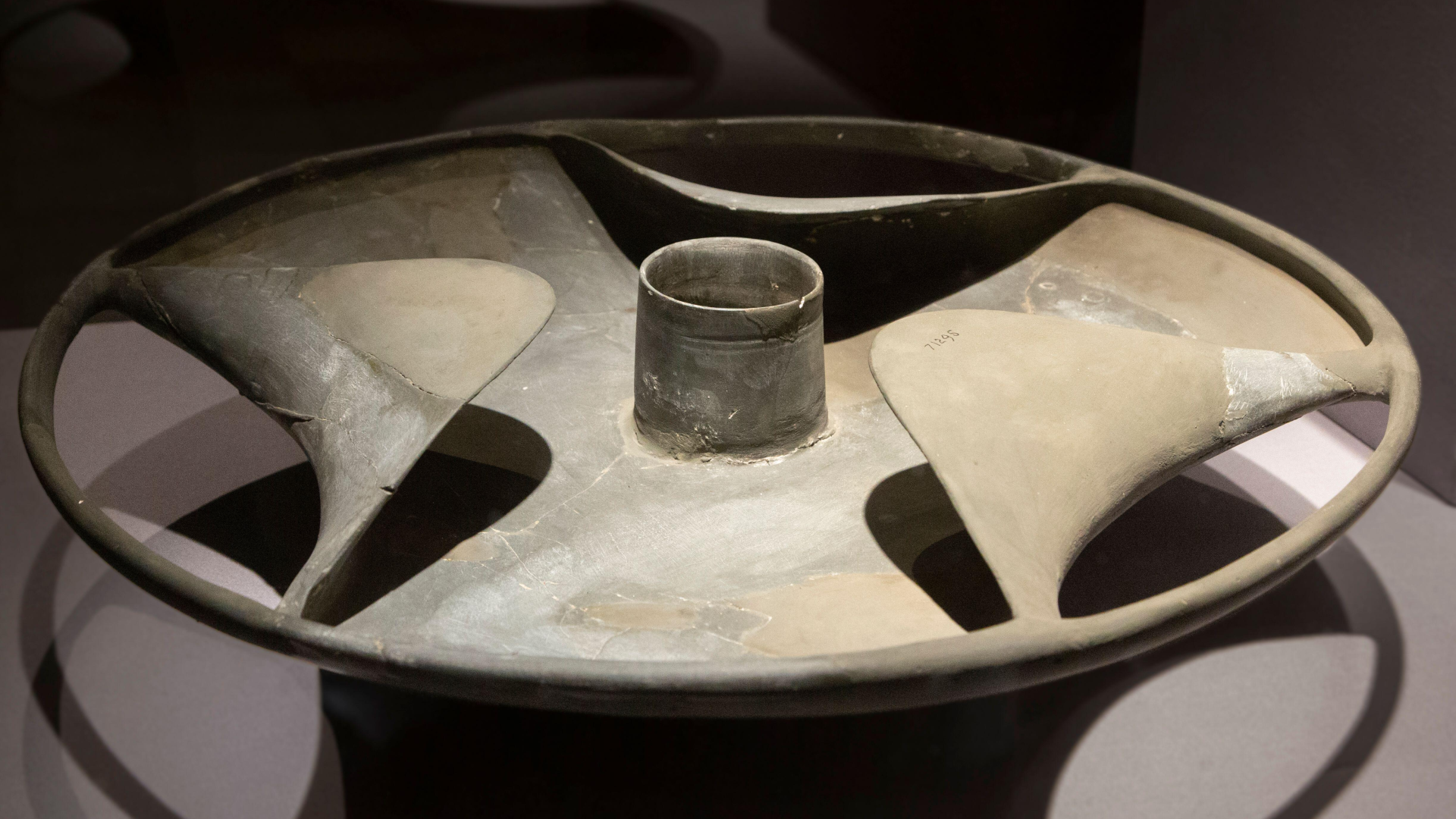Sabu Disk: A mysterious 5,000-year-old Egyptian stone sculpture that looks like a hubcap
This unique disk-shaped bowl, found in a 5,000-year-old Egyptian tomb, has puzzled archaeologists for nearly a century.

Name: Sabu Disk
What it is: A stone vessel
Where it is from: Saqqara necropolis, in Egypt
When it was made: Circa 3100 to 2900 B.C.
This delicate stone vessel was discovered in 1936 in the tomb of Sabu, an ancient Egyptian official buried in the Saqqara necropolis during the first dynasty period. When it was found, the disk was in pieces. It has since been reconstructed and is in the collection of the Egyptian Museum in Cairo.
Sabu's mastaba, a rectangular tomb with sloping walls and a flat roof, was excavated by British Egyptologist Walter Emery. In his publication describing the Saqqara tombs, Emery wrote that the burial chamber had been looted for its jewelry and precious metals. But Sabu's skeleton was intact inside a wooden coffin, and his tomb was filled with dozens of stone and pottery vessels, flint and copper tools, the remains of two oxen, and a unique bowl.
Emery described the Sabu Disk as an ornamental tri-lobed bowl that measured 24 inches (61 centimeters) in diameter and 3.9 inches (10 cm) tall. The bowl was carved out of metasiltstone, a sedimentary rock that has undergone some metamorphism.
Related: Hornelund Brooches: Viking age gold ornaments mysteriously buried in Denmark 1,000 years ago
According to Egyptian archaeologist Ali El-Khouli, flat and wide stone bowls were common in the first to third dynasties of ancient Egypt. But this particular bowl found in Sabu's tomb is unusual because of the three thinly carved and curving wings that rise from the edge of the disk. When viewed from above, this decoration is suggestive of a modern steering wheel, propeller or hubcap.
The Sabu Disk's unique design has led to numerous theories about the item's purpose, ranging from part of a water turbine to a piece of a hyperdrive from an alien spaceship. One recent theory even suggests the disk was used as a "mash tun," a vessel that holds grain and hot water for making beer.
But the most likely explanation is that the Sabu Disk had a similar purpose as other wide, flat bowls in ancient Egyptian culture: It probably held food or oil. The delicate nature of the metasiltstone and carving, though, suggests that the bowl was not for everyday use and may have been placed in Sabu's tomb as an offering for the afterlife.
Get the world’s most fascinating discoveries delivered straight to your inbox.

Kristina Killgrove is a staff writer at Live Science with a focus on archaeology and paleoanthropology news. Her articles have also appeared in venues such as Forbes, Smithsonian, and Mental Floss. Kristina holds a Ph.D. in biological anthropology and an M.A. in classical archaeology from the University of North Carolina, as well as a B.A. in Latin from the University of Virginia, and she was formerly a university professor and researcher. She has received awards from the Society for American Archaeology and the American Anthropological Association for her science writing.
You must confirm your public display name before commenting
Please logout and then login again, you will then be prompted to enter your display name.


